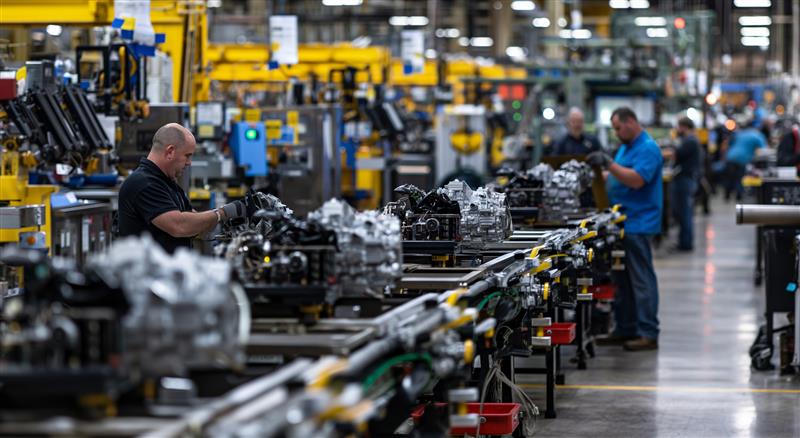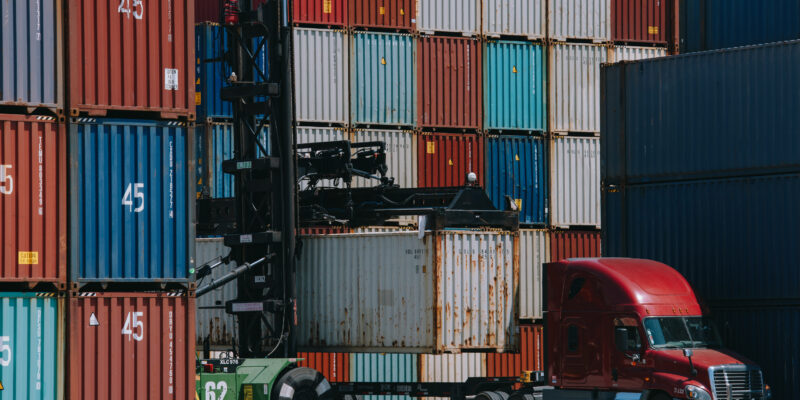Automotive manufacturing in Mexico: Adapting to trade shifts and new tariffs

Mexico’s geographic location, skilled workforce, and trade agreements have made it a prime destination for automotive manufacturing. But with new tariffs on imported vehicles announced this week—raising costs for foreign-made cars and reshaping trade strategies—manufacturers and suppliers must adapt. As the world’s seventh-largest passenger vehicle manufacturer, Mexico produced 3.5 million vehicles in 2024, with 76% of exports destined for the U.S. In 2024, that number increased by more than 5%, with Mexico producing over 3.9 million vehicles. As Mexico’s role in auto supply chains continues to grow, navigating evolving trade policies and supply chain challenges is more critical than ever.
Mexico’s growing influence in the auto industry
While the automotive industry isn’t new to Mexico, the number of automotive assembly plants in Mexico has significantly increased over the past decade. The proximity of Mexico to the U.S. creates a geographical benefit. Major automakers with operations in Mexico include Audi, BMW, Ford Motor Co., General Motors, Honda, Hyundai, and more. As Original Equipment Manufacturers (OEMs) establish new plants, their suppliers often follow, setting up nearby facilities to maintain close proximity to production lines, decrease inventory lead times, and reduce the risk of supply chain disruptions.
Manufacturing within Mexico is continuing to evolve with new programs and government initiatives, including the Industria Manufacturera, Maquiladora y de Servicios de Exportación (IMMEX) program and the maquiladora system. IMMEX allows manufacturers to import raw materials and components duty-free as long as the final products are exported. The maquiladoras under IMMEX program allows factories run by a foreign country in Mexico to receive preferential tax benefits and participate in fiscal programs that are administered and established by Mexico and the foreign country.
Similarly, the United States-Mexico-Canada Agreement (USMCA) updated the rules of origin and increased regional value content (RVC) requirements for automobiles and parts, incentivizing more auto manufacturing in Mexico. Under USMCA, it has been more cost-effective for companies to source parts and assemble vehicles there compared to other countries.
Border-crossing challenges
Visibility is always essential in the supply chain, but especially for loads moving between Mexico and the U.S. Border crossings often create a “black hole,” which can lead to low load visibility that makes it difficult to ensure goods will clear quickly and seamlessly, creating friction in the entire supply chain.
Eaton, which manufactures automotive components, regularly ships products between its eight plants in Mexico and the U.S. and has experienced border crossing challenges firsthand. Until 2018, Eaton’s plants operated separately and used different customs protocols, making it difficult to know where products were in the supply chain. As a result, Eaton employees didn’t have visibility of operations and processes through customs, which decreased productivity across the board and caused delays.
To help improve the process, Eaton turned to Uber Freight to consolidate the customs process through its commercial partnership with Uber Freight Mexico Customs, powered by TP Laser, for all plants through the Laredo border, making border crossings much easier.
Seamless deliveries are especially important for manufacturing facilities that rely on just-in-time (JIT) inventory. Uber Freight’s inbound transportation management, including a Plan For Every Part (PFEP) strategy, increases visibility to support JIT inventory strategies. PFEP provides an extensive list of data attributes on every part coming from suppliers and every finished good going to customers, reducing material shortages, supply chain complexity, and cost.
Comprehensive risk assessment
For manufacturers considering setting up or expanding operations in Mexico, it is important to consider all potential risk factors and identify ways to mitigate them. Issues to consider include:
- Infrastructure challenges: Many roads in Mexico are narrow and susceptible to congestion, which can lead to longer transit times and higher transportation costs. Knowing which routes are prone to congestion and applying route optimization technology can help shippers avoid bottlenecks.
- Security: Cargo theft is a top concern, and road security continues to be a main issue for Mexico’s transportation with cargo theft being higher in some areas of the country than others. To help combat cargo theft, Uber Freight has a fraud prevention department with tools and resources and has multiple layers of controls to safeguard customers and carriers from fraud.
- A driver shortage: Like in the U.S., Mexico is also experiencing a shortage of drivers. Uber Freight has strategic carrier partnerships and dedicated capacity in Mexico, making it easier for drivers to enter the transportation marketplace.
- Telecommunications: The maturity of the technology in Mexico is much different than in the U.S., which can result in inconsistent telecommunications coverage and make seamless visibility a challenge. In some areas, satellite signals fail to pick up truck locations, preventing real-time transmission of position data. However, Uber Freight’s TMS and other tools can help with fleet management and supply chain coordination even with limited connectivity.
Doing business in Mexico
While 2023 saw significant amounts of investment in Mexico, that slowed in 2024 and has largely paused at the current time due to the uncertainty surrounding trade. Challenges are expected to remain for the coming years, and there are several factors that could impact automotive manufacturing, including:
- Trade policies: A shifting landscape for auto manufacturers. The latest tariffs on imported cars and car parts create multiple unknowns for automotive manufacturers and suppliers, especially those relying on Mexico’s production. The U.S. will now impose a 25% tariff on all foreign-made vehicles, with reciprocal tariffs adjusting U.S. rates based on what other countries charge. While the long-term impact remains uncertain, these new measures could disrupt supply chains, alter sourcing decisions, and increase costs for U.S. automakers and consumers alike. Given that approximately 78% of Mexico’s exports go to the U.S., these policy changes could have wide-reaching effects on cross-border trade.
- USMCA revisions: The United States-Mexico-Canada Agreement (USMCA) will soon undergo its 2026 mandatory revision, which could also bring changes to manufacturing. Manufacturers will need to assess and optimize their supply chain proactively to help navigate changes in shipping costs, route efficiency and sourcing decisions.
- Labor rates: With more companies relocating operations to Mexico, labor rates could increase, which would change the economics of doing business in the country. Mexico recently increased its minimum wage, and additional increases are expected.
Even with the uncertainty, Mexico’s influence in the North American automotive industry is likely to continue increasing over the next decade. President Claudia Sheinbaum presented Plan México, an initiative to attract $277 billion in investments between 2025 and 2030 and establish Mexico as a hub for global supply chains. The plan aims to enhance local manufacturing in strategic sectors and create 1.5 million new jobs in specialized manufacturing.
For companies that plan to manufacture in Mexico, it is essential to find the right supply chain partners with expertise in the country and build strong relationships. Uber Freight’s 2025 Q1 Market Update and Outlook offers several recommendations for companies operating in Mexico, including:
- Leverage technology and TMS platforms to integrate networks, minimize inefficiencies, and eliminate redundancies.
- Apply engineering and data-centric best practices to build cost-efficient models that minimize transit times at the best cost.
- Diversify border crossing points and modes to increase flexibility and ease traffic.
- Foster relations with incumbent carriers to stay ahead of market trends and adapt to changes.
Uber Freight is working directly with customers, including automotive companies, to help assess the cost implications of different sourcing strategies and provide guidance on long-term network optimization to minimize tariff exposure. Uber Freight’s logistics consultants can also provide guidance on inventory strategies, such as forward-stocking inventory, as well as contingency planning.
Future proof your auto supply chain with Uber Freight
Automotive suppliers today need to effectively serve their OEMs with a focus on navigating cross-border regulations, customs, nearshoring, and trade policies efficiently. Uber Freight has a dedicated automotive operations team in Mexico with the expertise and local knowledge needed to help automotive companies succeed in cross border logistics. Uber Freight simplifies cross-border shipping with end-to-end visibility, from freight origin to customs clearance and final delivery.
Contact Uber Freight today to learn more about doing business in Mexico.

